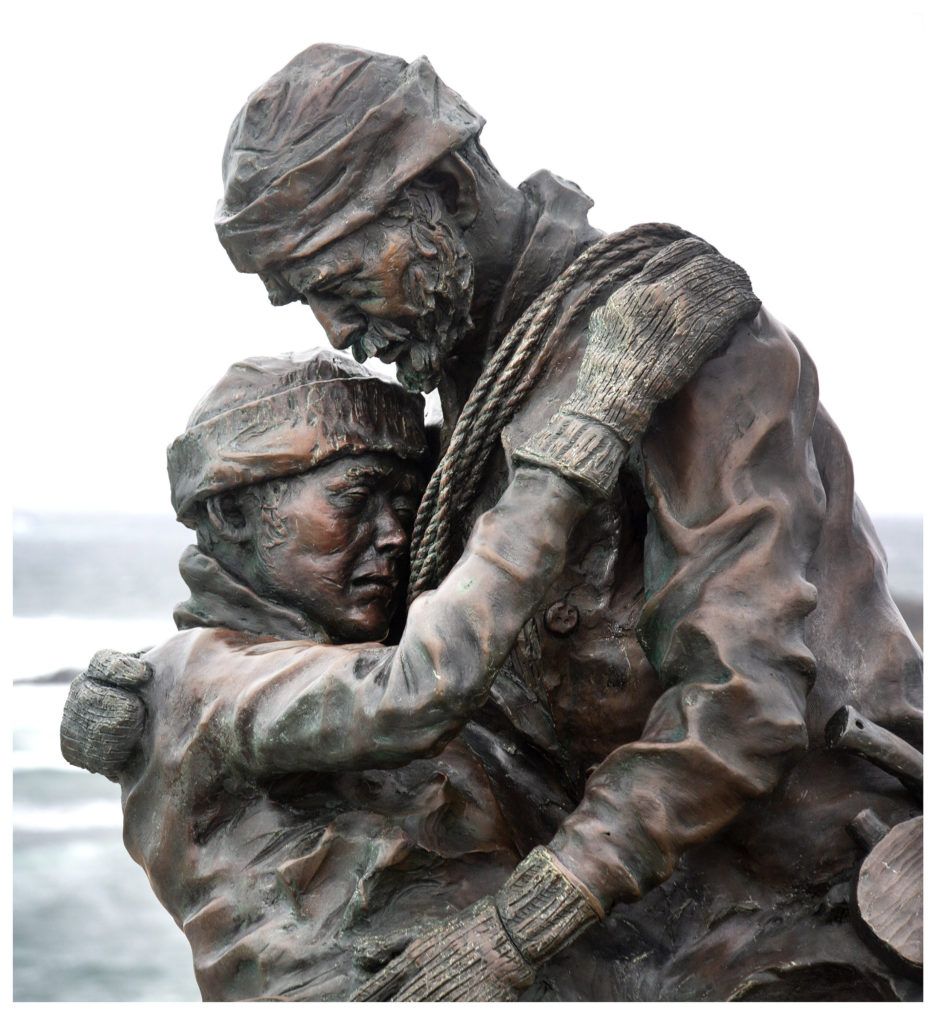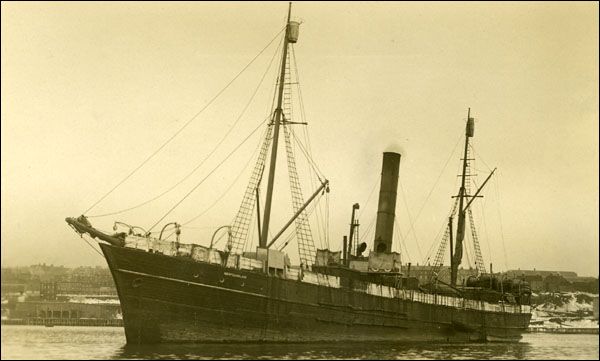Newfoundland has two large-ish cities: Corner Brook on the west coast, and the capital of the province of Newfoundland & Labrador on the east side, St John’s. Other than that there are numerous outports dotted along the 6,000 miles of rugged, jagged coastline and a smattering of small towns carved out on inland lands often surrounded by forest. Every town or outport seems to highlight a reason to visit: natural wonders, UNESCO sites, military installations, Gander, fishing history, Viking arrival, Acadian history, sealing history, memorials, doctors or nurses from early time. Today I visit Elliston, population as of 2021: 315 people. Located on the Bonavista Peninsula, the main attraction here is THE PUFFINS! It is also known as the Root Cellar Capital of the World. More on those interests in another post. This post is about a somewhat lesser advertised attraction. The Sealers Interpretation Centre. Besides being a museum about sealing, it is also a beautiful, stirring tribute and memorial to those who lost their lives in two separate sealing events in 1914.
Text below mostly taken directly from plaques at the Centre, which opened in 2014.
Without sealing, Newfoundland and Labrador could not have become what it is today. Early Europeans may have come for the cod, but it was the seal that enabled them to stay. Providing late winter and early spring sustenance and income, sealing complemented the summer fishery and made year-round settlement possible. As sealing became a successful venture, communities grew, outports thrived and a distinct culture was shaped.
From the late 1700s an industrial seal hunt developed in Newfoundland. Each spring vessels went offshore into heavy ice fields in search of herds.
From the 1870s onward, the sealing industry found its hub in St. John’s. Industry ownership and profits consolidated there. In late winter and early spring the bustling port City was a hive of activity. Hundreds of sealers converged from the outports to find berths. Preparation and provisioning to go to the ice were big business. The departure of the fleet was a huge public event with prayers and cheers and good wishes.
The risks of sealing were many. In early times, wooden ships could only get through loose ice, which sealers then had to cross, hopping in loose ice from one pan to the next to get to the seals. Hundreds of vessels were crushed in the ice: storms carried laden ships to the bottom. As vessels and crews became larger, new risks emerged for sealers. Ships had to drop men off in various locations and return to pick them up, one group at a time. In the meantime, conditions could change with sealers stranded on ice in winter storms with no way to reach their ships often freezing to death before help could arrive.

This bronze sculpture depicts Reuben Crewe and his son Albert John who were found frozen in embrace during recovery operations in the 1914 SS Newfoundland tragedy. They’d struggled to survive on the ice for two days and nights. A tragic lack of communication between two ships – the SS Newfoundland had no wireless device – contributed to the deaths of 77 men as two captains each assumed the 132 lost sealers were safe on the other’s vessel. Another man would later die in hospital. Eleven sealers from Elliston went with the SS Newfoundland, only 3 returned.
The same storm which the SS Newfoundland sealers encountered sank another sealing ship, the SS Southern Cross while she was returning from the Gulf of St. Lawrence to Newfoundland. All 173 men aboard perished.
Stock photo of SS Newfoundland.

Sealing captains have always been larger than life figures. Many amassed fame and fortune. Some were loved; others were feared and even despised. The best were said to have a “nose” for finding seals in great numbers – the “main patch,” loading their ships in record time and heading home in a few days.
Judgment was critical. On the ice, a captain’s word was law. The sealers’ lives depended on him. If a captain made the wrong decision, all hopes for success could end in failure and tragedy.
My note: At the minimum failure in the hunt would mean sealers’ families would go hungry at a crucial time of the year. Winter food stores were depleted, the fish were not yet running and gardens could not yet yield produce.
The long history of sealing has seen many changes. Today, sealing is mainly carried out by licensed sealers using approved high-powered rifles. The “fleet” utilizes both small open boats and long liners, the larger decked boats that range to a limit of 64 feet, 11 inches. Crews may be as small as one or two men or as large as eight to 10. Trips can last from a day or two to three weeks.
Stock image of a more contemporary sealing vessel and sealer.

The resource remains robust, providing the means to carry on a proud tradition and build the industry of the future. Harp seal population estimates over the last several decades have placed their numbers at over five million in Canadian waters.
In my words: Seal hunting has changed. Politics in many nations, animal protection groups, subsistence hunters, sealers and the public all have strong feelings about the continued hunting of seals. There is so much more to this topic. However, this post is about the human side of sealing during the late 19th and early 20th centuries. I am touched by the extent to which these men went to the hunt, most of them to help feed, clothe and shelter their families through times of adversity. Few, if any, made a profit aside from the captains and ship owners.
In my travels it was astounding to meet many locals who have deep roots in Newfoundland and have first hand stories of ancestors lives on the island.
Rage the Night by Canadian author Donna Morrissey who was born and raised in a small outport on Newfoundland is an engaging historical fiction novel which gives one a glimpse into the lives of sealers and their families while bringing the reader on the journey and tragedy of the SS Newfoundland.
